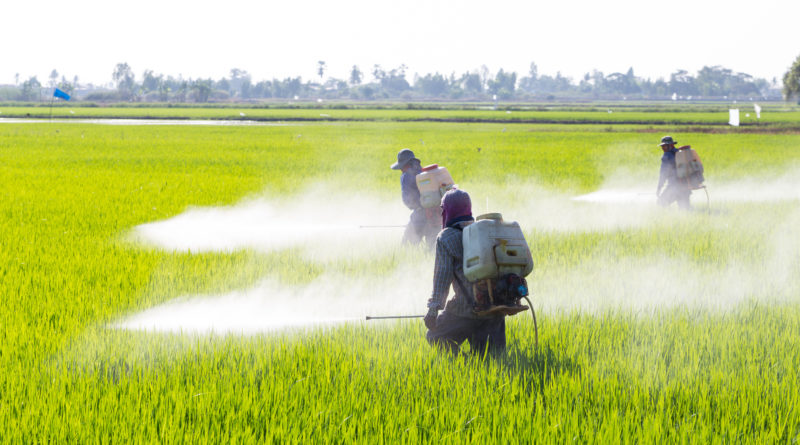Nine In Ten Americans Have Been Exposed To Pesticides
6,346 total views, 1 views today
Ever since Rachel Carson published her groundbreaking 1962 book Silent Spring, people around the world have seen the use of pesticides in agriculture as a major source of global concern. Carson’s work led to a full ban of the pesticide DDT within the American agricultural industry, not to mention the eventual formation of the Environmental Protection Agency (EPA). However, recent studies have shown that the fight against pesticides is far from over.
In a story reported recently, the Food & Environment Reporting Network pointed out that studies produced within the past two years have indicated that nine of every 10 Americans have pesticides or their byproducts in their bodies. Although this statistic may be alarming, it may make sense in light of just how much pesticide the agricultural industry uses. Farmers in the U.S. treat their crops with one billion pounds of pesticides every year. Even though the EPA frequently establishes new regulation guidelines regarding pesticides and outlines why they’re dangerous, the agricultural industry is deeply dependent on pesticide usage.
In particular, babies and children are especially sensitive to the potentially toxic effects of pesticides. According to Dr. Amanda Fifi, who studies pediatric nutrition and gastroenterology at the University of Miami Miller School of Medicine, enough scientific evidence exists to merit continued research into the effects of pesticide on children — even though different research teams have drawn different conclusions about their long-term dangers.
Fifi also says that children are especially susceptible to harm by pesticide because their growing bodies and smaller size mean that they ingest a larger “dose” of pesticide per every pound of food they eat. Children do indeed eat many of the foods most associated with pesticides, such as strawberries, spinach, and kale — all food choices young parents interested in healthy diets might serve their children.
These fruits and vegetables are all part of a list known as the Dirty Dozen. This list, published annually by the nonprofit Environmental Working Group (EWG), alerts consumers to the foods containing the most pesticides. Another list, known as the Clean 15, tells consumers which foods have the fewest pesticides. Avocado, sweet corn, and pineapple were among the Clean 15 list in 2019, so serving children these foods may decrease their chances of the childhood risks associated with pesticides.
Among the risks linked to childhood pesticide exposure are impaired fertility, increased risk of breast cancer, and early puberty. Exposure doesn’t come solely through food: Farmworkers who work closely with pesticides are likely to bring pesticides home on their clothes, from which they can fall to the floor as dust, bringing them into contact with toddlers and babies. This severe pesticide exposure has been correlated with neurodevelopmental disorders, impaired cognitive function, and autism — all effects that can also manifest as birth defects in women who are pregnant or planning families.
Pesticides present industrial concerns in more places than just the U.S. In Europe, recent studies have shown high levels of pesticides in water sources across the continent. Any solution to the problems that pesticides are still presenting nearly 60 years after Silent Spring first brought their dangers to public attention will require globally effective solutions.

